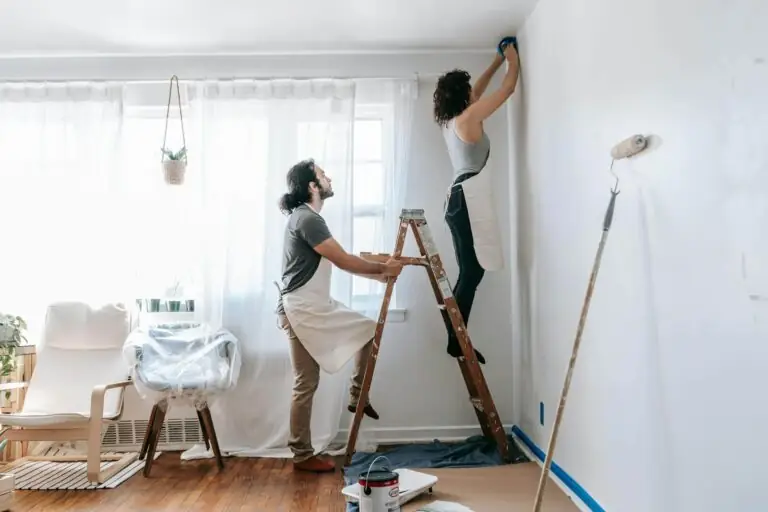Navigating Unexpected Home Repair Costs: Practical Tips for Homeowners

Unexpected home repair costs are a growing challenge for homeowners as home expenses become increasingly expensive. These emergencies can be detrimental to one’s finances, disrupting a carefully curated budget. Because of this, many put off crucial home repairs, often leading to more significant problems in the future.
But that doesn’t have to be the case. Homeowners can easily prepare for unexpected home costs without hurting their pockets. Today, this guide will offer practical strategies and tips that will help homeowners stay above emergency home repairs and avoid a financial crisis.
Create an Emergency Fund for Home Repairs
Setting aside some savings for home repairs is always a good idea. If you allocate a small percentage of your monthly income to an emergency fund for your home, you can avoid financial stress when disaster strikes.
Investopedia recommends saving three to six months’ worth of potential home-repair expenses. This amount provides a cushion for significant repairs, like roof replacements or major system failures. Building this fund allows you to handle unexpected expenses independently without resorting to high-cost debt or loans. Knowing you’re financially prepared for homeownership challenges also offers peace of mind.
However, saving such an amount can be challenging for many, especially for those with tight budgets or other financial priorities. If this feels overwhelming, start small by setting aside a manageable percentage of your monthly income.
Even small, consistent savings can add up significantly over time. Trimming non-essential expenses and channeling those funds into your emergency account can accelerate your progress. Remember, building a financial cushion doesn’t happen overnight—but every bit saved moves you closer to more excellent financial stability.
Exploring alternative solutions can provide relief for those who find it difficult to save. Look into community grants, government programs, or even assistance from local organizations aimed at homeowners. These resources often offer financial support for critical home repairs, especially for those who may not qualify for conventional loans.
You can apply wallpapers, paints, etc. on walls and see how they look in various interiors.

Exploring Financial Solutions for Urgent Repairs
Home repairs are costly, especially when you least expect it. So, if you need funds quickly, it might be worth looking into financial solutions. Financial institutions and online resources are valuable places to start.
Major banks and credit unions often provide detailed guides on the personal and home equity loans they offer. Visiting their websites or speaking to a representative can give you clarity on terms and repayment plans tailored to your needs.
Moreover, various online platforms can provide insights for quick loan solutions. CreditNinja’s blog, for example, can help homeowners find alternatives to cover unexpected expenses, giving them more options to choose from.
Another useful avenue for information is financial advisory websites or forums that compare loan products from various lenders. Websites like NerdWallet or Bankrate feature tools that allow you to explore and compare lenders based on borrowing costs, loan terms, and your credit profile. This can help you narrow down choices that align with your financial situation and repair needs.
Additionally, community programs and government resources can be a lifeline for urgent repair costs. Many local governments and non-profit organizations maintain databases of grants, low-cost loans, and homeowner assistance programs. For instance, the USDA Rural Development offers loans and grants for home improvements in eligible rural areas, which can be invaluable for homeowners facing financial strain.
Finally, it’s worth contacting your utility companies or homeowners’ insurance providers. Many utility companies offer service plans that cover repair costs for essential systems like HVAC units or water heaters, while some insurance policies include emergency repair provisions. Exploring these options can help you make informed choices and tap into valuable support you might already have access to.
Prioritize Repairs Based on Urgency
Just because something is broken doesn’t mean it needs immediate attention. While it’s good to address issues before they get worse, it’s more important to prioritize repairs based on urgency. Begin by determining which repairs significantly impact your home’s safety, structural integrity, and overall functionality.
- Safety Concerns: Repairs that directly affect the home’s and its occupants’ safety should always take precedence. For example, issues such as exposed electrical wiring, gas leaks, or broken steps pose immediate risks to health and well-being. Addressing these hazards not only ensures the safety of everyone in the household but also prevents potential accidents or emergencies.
- Structural Integrity: Damage that compromises your home’s structural strength requires urgent attention. This includes issues like a sagging roof, cracks in the foundation, or water damage affecting load-bearing walls. Such problems can lead to significant deterioration over time, increasing repair costs and potentially endangering the property’s stability.
- Overall Functionality: Repairs impacting essential systems within the home, such as plumbing, heating, or cooling systems, should also be prioritized. For instance, a broken water heater or an HVAC system that fails during extreme weather can severely disrupt day-to-day life. Ensuring these core functions are operational is crucial for maintaining a comfortable and livable environment.
Consider creating a list or ranking repairs based on their impact and urgency to make prioritization easier. Sorting repairs into categories such as “critical,” “moderate,” and “low priority” can help you focus on what matters most without feeling overwhelmed.
If you’re unsure how to do this, consider consulting professionals. They can provide valuable insight into what requires immediate attention versus what can wait. This method not only helps you allocate resources wisely but also ensures your home remains a safe and comfortable place.
The Power of Proactive Homeownership
Proactivity is key to managing unexpected repairs. Building savings, conducting regular maintenance, prioritizing urgent fixes, and preparing financial solutions beforehand keep you ready for any challenge. Taking these steps ensures your home remains secure and you confidently stay in control.
